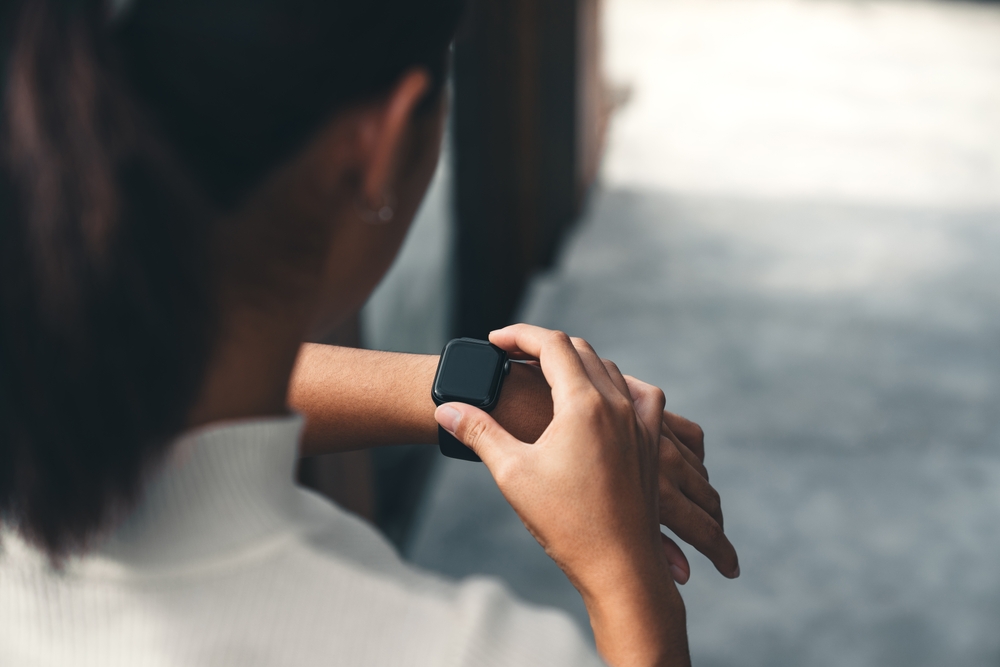Choosing the right wrist for your watch might seem like a small detail, but it’s one that many women ponder. Whether it’s about making a fashion statement or adhering to cultural norms, the choice can be surprisingly complex.
Choosing the right wrist for a watch is a blend of personal preference, practicality, and cultural considerations. While traditional etiquette suggests wearing a watch on the left wrist, especially for right-handed individuals, the ultimate choice should align with your comfort and style. Modern watch-wearing etiquette is flexible, allowing you to choose based on your dominant hand, fashion sense, and cultural beliefs.
This article delves into the various aspects of this seemingly simple yet intriguing question: What hand does a watch go on for a woman? From cultural norms to fashion tips, we’ve got you covered.
Historical Perspective
The history of wristwatches is deeply intertwined with the evolution of women’s fashion and accessories. Initially, wristwatches were considered feminine, while pocket watches were masculine.
Over time, wristwatches became unisex, but the question of which wrist to adorn remained. The evolution of fashion has seen shifts from left to right and vice versa, but there’s more to it than just following the trend.
Cultural Norms
Ah, the fascinating realm of cultural norms! When it comes to wristwatch placement, different cultures have their own unique perspectives. In Western societies, the left wrist is often the default choice, especially for right-handed individuals. This isn’t just a matter of convenience; it’s a tradition that has been passed down through generations.
However, venture into Eastern cultures, and you might notice a different trend. In some Asian societies, for example, the right wrist is considered more auspicious for wearing a watch. This is often tied to cultural beliefs and practices that go beyond mere practicality.
Then there are religious considerations. In Islamic culture, it’s preferable to wear a watch on the right hand, aligning with the significance of the right hand in Islamic traditions.
Global fashion also plays a role in shaping these cultural norms. International celebrities and influencers often set trends that transcend borders, making the “correct” wrist a moving target influenced by the global zeitgeist.
So, the next time you’re traveling or mingling in a multicultural setting, take a moment to observe the wrists around you. You’ll find that the choice of wrist for a watch can be a subtle yet telling reflection of cultural identity.

Practical Reasons
When it comes to the nitty-gritty of daily life, practicality often trumps tradition and fashion. Your dominant hand is a key factor in deciding which wrist to grace with a watch. For right-handed individuals, the left wrist is often the go-to choice. Why? It’s simple: your dominant hand is busy. Whether you’re writing, eating, or shaking hands, your dominant hand is constantly in motion. Wearing a watch on the non-dominant wrist minimizes the risk of damaging it.
But what if you’re left-handed? The logic flips. Your right wrist becomes the ideal candidate for a watch. This isn’t just about avoiding damage; it’s also about ease of use. Imagine trying to adjust the time or use a stopwatch feature with your non-dominant hand. It’s awkward, to say the least.
And let’s not forget about smartwatches. These high-tech gadgets often have touchscreens and various functionalities that require frequent interaction. Wearing a smartwatch on your non-dominant wrist makes it easier to navigate the interface without disrupting your activities.
In essence, the practical reasons for choosing a wrist for your watch are rooted in everyday functionality and comfort. It’s about making your life easier, one tick at a time.
Fashion Statement
Ah, the allure of a well-placed fashion statement! When it comes to wristwatches, the wrist you choose can be a canvas for your personal style. It’s not merely about telling time; it’s about telling the world a little something about you.
Ever noticed how some people wear their watches face inward, toward the wrist? That’s a fashion choice, often seen in military personnel but adopted by those who appreciate its rugged, utilitarian charm. Then there are those who layer their watches with bracelets, creating a boho-chic look that screams personal expression.
Let’s not forget the trendsetters who dare to wear a watch on each wrist. It’s audacious, it’s rebellious, and it’s a trend that’s catching on. Whether it’s two watches with contrasting styles or a smartwatch paired with a classic analog, this style pushes the boundaries of traditional fashion norms.
And what about the choice of watch itself? A sleek, minimalist watch on your wrist can exude sophistication, while a chunky, colorful watch can make you look adventurous and fun-loving. The wrist you choose can either balance or accentuate the statement made by the watch itself.
So, the next time you strap on a wristwatch, remember: you’re not just keeping time; you’re keeping up with fashion, making a statement that is uniquely you.

Myths and Misconceptions
The world of wristwatches is rife with myths and misconceptions, some of which can be downright amusing, while others are misleading. One such myth is the notion that the wrist you choose for your watch is a signal of your sexual orientation. This idea has been thoroughly debunked, yet it persists in certain circles.
Another common misconception is that wearing a watch on a particular wrist is a secret code for various subcultures or communities. While it’s true that some groups may have specific traditions, these are not universally applicable and should not be taken as a general rule for the public.
Some people also believe that wearing a watch on the dominant hand can affect its mechanical workings over time. Watchmakers and experts in the field have clarified that modern watches are designed to withstand everyday wear and tear, regardless of which wrist they are on.
In the realm of fashion, there’s a myth that you should never wear a watch with formal attire. This is outdated advice; today, a well-chosen watch can enhance even the most elegant outfit.
The bottom line is that the choice of wrist for your watch should be based on personal comfort, practicality, and style. Don’t let myths and misconceptions cloud your judgment or limit your personal expression.
Smartwatch vs. High-End Watch: Which Wrist and Why?
The type of watch you’re wearing can also influence your choice of wrist. Let’s delve into the contrasting worlds of smartwatches and high-end watches to see how they each fit into this wristy business.
Smartwatches
Smartwatches are the epitome of functionality meeting fashion. With features like fitness tracking, message notifications, and even GPS, these gadgets are designed for frequent interaction. Tech experts often recommend wearing a smartwatch on your non-dominant wrist for ease of use. This allows you to navigate the touchscreen or press buttons without interrupting your dominant hand’s activities.
High-End Watches
High-end watches, often mechanical and exquisitely crafted, are less about functionality and more about style and craftsmanship. These watches are usually designed with the assumption that they’ll be worn on the left wrist, primarily because the majority of people are right-handed. The crown and other adjustment knobs are typically situated for easy access by the right hand. However, the ultimate choice should align with your comfort and how you want to showcase this piece of art.
The Middle Ground
Interestingly, some people own both types of watches and choose the wrist based on the watch they’re wearing for the day. A smartwatch might go on the non-dominant wrist for a workout session, while a high-end watch graces the opposite wrist for an elegant evening out.

Expert Opinions
Fashion designers suggest that the wrist you choose can depend on the outfit you’re wearing. For instance, if you’re sporting an ensemble with intricate sleeve details on one arm, you might opt to wear your watch on the other wrist to balance the look.
Jewelry experts often recommend coordinating your watch with other wristwear
If you’re wearing a set of bangles or a bracelet, placing your watch on the opposite wrist can create a harmonious look.
In the realm of smartwatches, tech experts often emphasize functionality over tradition. Given the interactive nature of these devices, ease of use is a top priority, which often means wearing the watch on your non-dominant wrist.
In summary, expert advice is diverse, reflecting the multifaceted considerations that go into choosing the right wrist for your watch. Whether you lean towards the practical advice of watchmakers or the aesthetic guidance of fashion gurus, these expert insights add another layer to your decision-making process.
Sources
- Watch Etiquette – A comprehensive guide on watch-wearing etiquette.
- Cultural Norms and Watches – A Quora discussion on how different cultures perceive watch-wearing.
- Fashion Trends in Watch-Wearing – A GQ article that discusses myths and fashion statements related to watch-wearing.

Alex Sterling isn’t just a seasoned writer; he’s a connoisseur of fine living, with a particular passion for high-end watches. He loves uncovering the latest trends in technology, lifestyle, and wellness.

